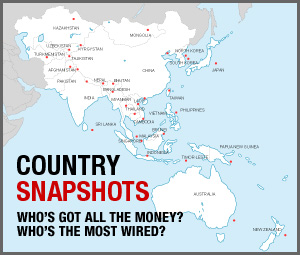Can India be Great? 
 Image: Lyle Vincent
Image: Lyle Vincent
South Asia commentator Sumit Ganguly thinks so, but warns woeful infrastructure and grinding poverty could still hold it back.
India’s aspirations to become a great power in the Asia-Pacific region and beyond can be traced to the time of Jawaharlal Nehru, its first post-independence prime minister. At that time, however, India’s hopes of assuming great power status were based an aspirational world view of constructing a new global order based on international law, reliance on multilateral institutions and an end to balance of power politics. This world view was based both on expediency and a moral component.
It was expedient because India’s material power, both military and economic, was quite limited. Yet it was not bereft of ethical considerations. Nehru genuinely believed that it was possible to fashion a new global order based on moral principles. His vision, however, met a tragic demise in the aftermath of the brutal and disastrous Sino-Indian border war of 1962. A grossly underequipped and unprepared Indian Army was dealt a cruel defeat at the hands of a battle-hardened and well-armed Chinese People’s Liberation Army in the Himalayas when attempts to reach a diplomatic settlement of the border dispute failed.
So, six decades after it secured independence, can India emerge as a great power? The question is far from trivial. At an international level, India’s rise, if peaceful, would challenge a widely held belief in the study of international politics that holds that the rise of new great powers can lead to major war as their interests clash with those of existing great powers. Yet, so far at least, no state has expressed serious misgivings about India’s rise. Indeed, regionally, its rise could improve the lot of a number of the smaller states of South Asia because India would be in a position to provide a number of collective goods to them. For example, it could help create a free trade zone in South Asia, thereby benefiting all the states in the region. Even though India has signed such a treaty it has yet to ratify it. And in the domestic arena, meanwhile, India’s rise would also mean an end to the grinding poverty that has stalked a significant segment of its population since it secured independence from the British Empire in 1947.
There’s little question that India is on a renewed quest for great power status. However, as it embarks on this path, it still faces a number of pitfalls–its rise is far from certain or inevitable.
The Palimpsest of the Past
During the Cold War, thanks to flawed domestic and foreign policies, India’s policymakers had successfully managed to marginalize the country in terms of the global order. At home, economic growth was anaemic thanks to India’s pursuit of namby-pamby, pseudo-socialist policies. Abroad, its professed policy of nonalignment, which operated with a profound pro-Soviet tilt, marginalized it in global politics. It is only since the end of the Cold War that India has been able to meaningfully revive its fond hopes of achieving great power status.
With the end of the Cold War, and for complex reasons, India came to fitfully embrace more market-oriented development policies. At the same time, for all practical purposes, the country dispensed with its commitment to the anachronistic dogma of nonalignment. The results of these two shifts were nothing short of transformational. In the domestic arena, India was able to break the shackles of what the eminent Indian economist, Raj Krishna, had mordantly termed the ‘Hindu rate of growth’ and move the country on to a path of rapid economic growth. Following its abandonment of a sclerotic economic regime that strangled economic growth, the economy grew at 5.3 percent in 1992. By 2007 it had reached 9.5 percent, making India the second-fastest growing economy in the world. Even in the wake of a global recession India managed to grow at 6.7 percent in 2008. Meanwhile, the country made important strides in poverty alleviation. For example, according to the World Bank, the percentage of the population living below the poverty line declined from 36 in 1993-94 to 27.5 in 2004-2005.










